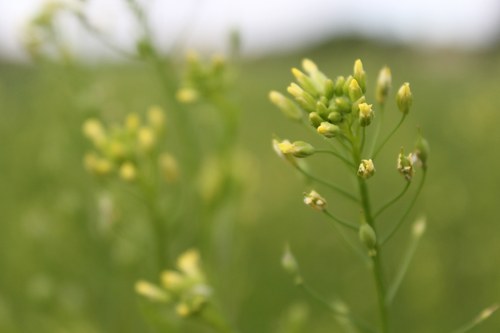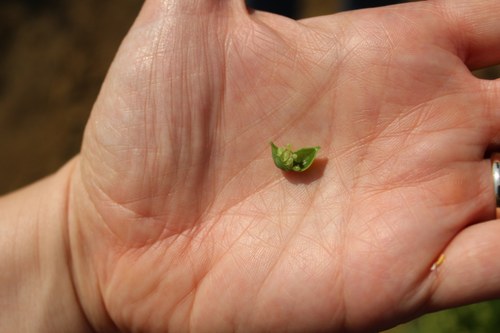
Differently from other widely cultivated Brassicaceae (e.g. rapeseed) camelina owns a unique seed composition with relevant oil (40-42%) and protein contents (25-28%), accompanied by unique oil profile ( -linolenic acid up to >35%, tocopherols 800-1000 ppm, erucic acid <4%), thus making its seeds highly suitable for a variety of feed, food or non-food applications.
From the agronomic point of view camelina is characterized by low agricultural input requirements, resistance to common Brassica pests, and diseases, as well as tolerance to abiotic stresses . The wide environmental adaptability and the availability of both winter and spring cultivars confer an enormous advantage to camelina over other emerging oilseed crops for the inclusion/integration into traditional crop rotations, primarily based on cereals or pulses.
Furthermore, in mild winter environments, like those characterizing Mediterranean climate, the autumn sowing of spring camelina varieties appears a feasible strategy to increase seed yield as well as to modify seed quality in terms of fat and protein contents and oil FA composition. Normally camelina oil presents n-3/n-6 ratio ( -linolenic/linoleic ratio) with values ranging between 1.2 to 2 mainly depending on the environmental conditions where the plant is grown.
New camelina lines with improved oil quality have been only recently selected, in particular new lines (LOW_LA) with significant increase in oleic and simultaneous decrease in linoleic acid (LA) contents [21] have been released by Linnaeus Plant Science, a research Canadian company which is closely collaborating with UNIBO, within the European project COSMOS (635405). These LOW_LA lines, with improved n-3/n-6 ratio, show better final oil quality in terms of health and oxidative stability traits and cold pressed camelina cake keeps in its composition a certain fraction of such healthy oil.

As all the Brassicaceae species, camelina seeds contain several antinutritional molecules, e.g. glucosinolates (GLS), sinapine, condensed tannins, trypsin inhibitors and phytic acid. Among these, GLS are the most undesirable antinutritional compounds, because even if conferring protection against pathogens, their presence in the seed cake limits the use as animal feed because their breakdown products could cause goiter especially in monogastrics.
For this reason, it is desirable to reduce the seed GLS contents, to use the cake as animal feeding, while maintaining the disease-protective effects of GLS in other plant organs. Compared to other Brassicaceae GLS content in camelina cake is fairly limited (23-44 µmol g-1), but still exceed the European regulation for these undesirable compounds.
Recently, CNR-IBBA produced by classical breeding a new camelina line with reduced GLS content. This line (LOW_GLS), with 50% less GLS compared to the parentals, would allow to increase camelina cake inclusion in the diet of monogastrics (i.e., poultry), permitting a higher valorization of seed by-products and consequently an improved healthiness of eggs and meat.
Although -linolenic and GLS contents in camelina seeds are under genetic control, both are also highly influenced by environmental, agronomic and climatic variables. Therefore, the scope of the ARGENTO project is to evaluate the effects of the agronomic management in response to different environments on the final seed quality of those newly released camelina lines (LOW_LA & LOW_GLS) aiming at optimizing camelina seed qualitative traits for poultry feeding (i.e., quails).